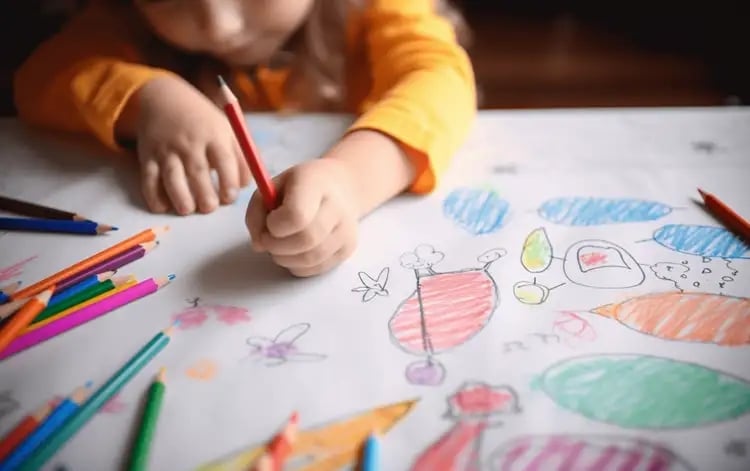Teaching Your Child to Draw: Simple Tips and Techniques for Parents
 Drawing is a fun and creative activity that children of all ages can enjoy. It is also an essential skill that can help to develop their fine motor skills, hand-eye coordination, and creativity. As a parent, you can play an important role in teaching your child to draw. Here are some simple tips and techniques to help you get started:
1、Start with simple shapes.
Begin by teaching your child to draw simple shapes, such as circles, squares, and triangles. These shapes are easy to draw and can be combined to create more complex images. Encourage your child to experiment with different sizes and combinations of shapes.
2、Use a variety of materials.
Provide your child with a variety of materials to draw with, such as crayons, markers, and colored pencils. Encourage them to experiment with different colors and textures. You can also provide them with different types of paper, such as plain white paper, construction paper, and drawing pads.
3、Break it down.
Break the drawing process down into simple steps. For example, if your child wants to draw a picture of a dog, start by drawing the basic shape of the dog's body, then add details such as the ears, tail, and face. This can help your child to feel less overwhelmed and more confident in their drawing abilities.
4、Provide positive feedback.
Encourage your child to keep practicing and provide positive feedback on their drawings. Focus on the effort they put into the drawing, rather than the end result. This can help to build their confidence and encourage them to keep drawing.
5、Practice, practice, practice.
Drawing is a skill that takes practice to master. Encourage your child to draw as often as possible, and provide them with opportunities to practice in different settings. For example, they can draw at home, at school, or while on a family outing.
In conclusion, teaching your child to draw is a fun and rewarding experience that can help to develop their fine motor skills, hand-eye coordination, and creativity. By following these simple tips and techniques, you can help your child to build their confidence and become a skilled artist.
Drawing is a fun and creative activity that children of all ages can enjoy. It is also an essential skill that can help to develop their fine motor skills, hand-eye coordination, and creativity. As a parent, you can play an important role in teaching your child to draw. Here are some simple tips and techniques to help you get started:
1、Start with simple shapes.
Begin by teaching your child to draw simple shapes, such as circles, squares, and triangles. These shapes are easy to draw and can be combined to create more complex images. Encourage your child to experiment with different sizes and combinations of shapes.
2、Use a variety of materials.
Provide your child with a variety of materials to draw with, such as crayons, markers, and colored pencils. Encourage them to experiment with different colors and textures. You can also provide them with different types of paper, such as plain white paper, construction paper, and drawing pads.
3、Break it down.
Break the drawing process down into simple steps. For example, if your child wants to draw a picture of a dog, start by drawing the basic shape of the dog's body, then add details such as the ears, tail, and face. This can help your child to feel less overwhelmed and more confident in their drawing abilities.
4、Provide positive feedback.
Encourage your child to keep practicing and provide positive feedback on their drawings. Focus on the effort they put into the drawing, rather than the end result. This can help to build their confidence and encourage them to keep drawing.
5、Practice, practice, practice.
Drawing is a skill that takes practice to master. Encourage your child to draw as often as possible, and provide them with opportunities to practice in different settings. For example, they can draw at home, at school, or while on a family outing.
In conclusion, teaching your child to draw is a fun and rewarding experience that can help to develop their fine motor skills, hand-eye coordination, and creativity. By following these simple tips and techniques, you can help your child to build their confidence and become a skilled artist.


